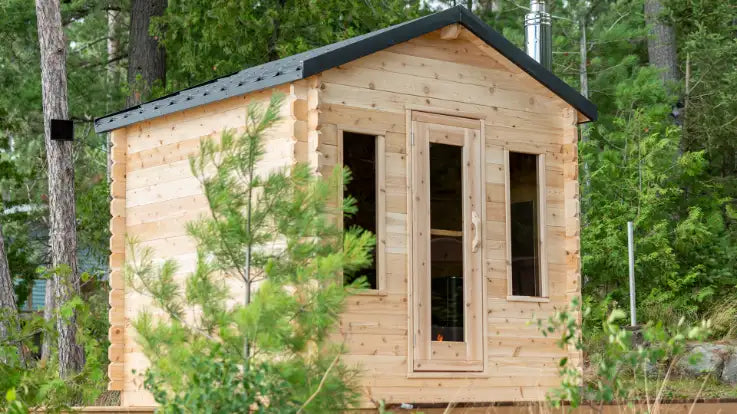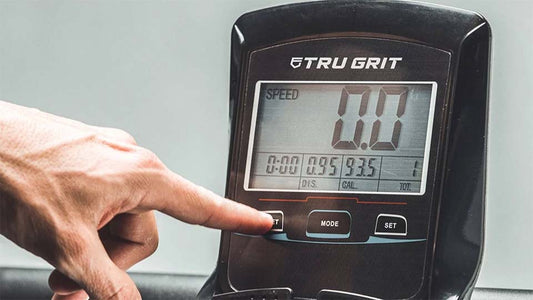How to Build a Wood-Burning Sauna (Step-by-Step Guide for 2025)

In the next 15 minutes of reading you’ll know exactly how to turn a stack of cedar tongue-and-groove boards, a wood stove, and a weekend’s worth of grit into a steaming Finnish retreat—without paying prefab prices.
- Save thousands versus buying a factory sauna kit or hiring contractors
- Feel the difference of true wood-fired heat that breathes life into every session
- Own the ritual—from splitting kindling to hearing that first crackle, this is craftsmanship you’ll enjoy for decades
Safety first. Before you pick up a saw, confirm clearance, chimney, and fire-resistance requirements with your local building authority or fire marshal (start by reviewing NFPA 211 and your state’s residential code). Proper permitting now saves headaches—and fines—later.
Ready? Let’s lay the first board and kindle your personal slice of Finnish bliss.
Before You Start
Is a Wood-Burning Sauna Right for You?
Traditional wood heat delivers a dry, rolling warmth and that unmistakable cedar-and-smoke aroma, but it isn’t always the best fit for every homeowner. Compare the options below before you commit:

| Type | Heat Quality | Operating Cost | Maintenance | Install Complexity |
|---|---|---|---|---|
| Wood-Burning | High heat & humidity control; authentic crackle | Low (firewood) | Chimney cleaning, ash removal | High (stove + chimney + permits) |
| Electric | Consistent, thermostat-controlled | Medium-High (utility rates) | Minimal | Medium (240 V circuit) |
| Infrared | Mild radiant warmth (≈ 140 °F) | Low-Medium | Minimal | Low (plug-and-play) |
Space & Permitting Checklist
- Confirm local zoning allows solid-fuel or accessory heat structures.
- Respect minimum setbacks from property lines and other buildings (typically 3–10 ft).
- Provide chimney clearances: 2 ft higher than anything within 10 ft (NFPA 211).
- Pull required building and fire permits for the stove, chimney, and structure.
- Plan emergency access and snow/ice removal routes.
Budget & Time Estimate
| Option | Typical Cost | Hands-On Time |
|---|---|---|
| DIY Wood-Burning Sauna | $3,000 – $7,000 | ≈ 4 weekends (60–70 hrs) |
| Prefab Wood-Burning Kit | $9,000 – $15,000 | ≈ 1 weekend (12–16 hrs) |
Tip: Salvaged cedar can shave 20–30 % off material costs—just budget extra time for milling and sorting.
Site Selection
- Foundation stability: Use a level concrete slab, patio stones, or a deck rated for ≥ 3,000 lb.
- Prevailing winds: Face the door away from the wind so smoke clears entryways and neighbors.
- Proximity: Keep within 50 ft of water (cold plunge or hose) and power (lights, pump, audio).
- Drainage: Choose high ground or add gravel to prevent standing water under the base.
Materials & Tools Checklist
Lumber
- Cedar (best scent & rot-resistance)
- Spruce (budget-friendly, light color)
- Hemlock (knot-free, mid-price)
- Tongue-and-groove boards,
1 in × 4 in(≈ 900–1,100 linear ft for a 6 × 8 ft sauna)
Insulation & Vapor Barrier
- 3 ½ in foil-faced mineral wool batts (R-15)
- Aluminum foil tape for all seams
- Optional: 1 in foil-faced polyiso board under the floor
Wood Stove & Chimney Kit
Select a CSA/UL-listed sauna stove and Class-A chimney that match your room volume:
| Sauna Volume (cu ft) | Recommended Output (BTU) | Typical Stove Size |
|---|---|---|
| 150 – 250 | 15,000 – 25,000 | Small (1 – 1.5 ft3 firebox) |
| 250 – 400 | 25,000 – 40,000 | Medium (1.5 – 2 ft3) |
| 400 – 650 | 40,000 – 60,000 | Large (> 2 ft3) |
- 6 in stainless chimney kit (thimble, support bracket, cap)
- Heat-shield floor pad
- High-temp silicone & stove gasket rope
Hardware & Accessories
- #10 × 3 in & #10 × 5 in stainless steel screws (≈ 450 total)
- Exterior-grade hinges & latch (sauna door kit)
- Alder/cedar bench boards & supports
- Tempered-glass window(s) & cedar trim
- Thermometer, sand timer, vent covers
Tools
- Circular or track saw + fine-tooth blade
- Pocket-hole jig & 2 ½ in K-reg screws (bench frames)
- 18-ga brad/staple gun (foil barrier)
- 2 in hole saw (vents) & 6 in hole saw or jigsaw (chimney)
- Impact driver, level, rubber mallet & hit blocks
Step-by-Step Build Process
The walkthrough below mirrors the official assembly sequence for the Dundalk LeisureCraft Canadian Timber Georgian Cabin Sauna . Follow each step in order for a smooth, code-compliant build.

Step 1: Prep the Base & Staves
- Set patio stones or a sturdy deck that’s dead-level and squared.
- Lay the 8 base staves (they’re pre-marked) and fasten each end with two 3 in stainless screws.
Step 2: Lay the Cedar Floor
- Drop in the
floor starterplank so it sits flush inside the outer staves; screw only into the two outer staves for a clean look. - Work tongue-and-groove across to the
floor finisher; the final six boards can be screwed into every base stave (they’ll be hidden by benches). - Add three more 3 in screws into the long side staves for extra rigidity.
Step 3: Frame Front & Rear Walls
- Stand the
doorstave at the front and secure with four 3 in screws. - Set the
rear starterstave at the back and fasten the same way. - Add the first course of full-length wall staves all around, tapping tongues fully home and pinning every third board.
Step 4: Build Up the Side Walls
- Alternate medium and full staves on the front and sides, driving a 5 in screw into each pre-cut notch.
- Continue until you reach the fourth course on the front wall, ready for window installation.
Step 5: Install Door & Windows
- Set the two prefab window units into their openings, ensuring staves are fully seated.
- Slide the pre-hung cedar door between the window staves.
- Fill gaps with the small front staves, then cap with medium-length staves above each window.
- Finish stacking side and rear staves until walls are eight courses high.
Step 6: Add Gables & Ridge Support
- Tap in the tapered “triangle” staves on each side wall.
- Fasten the front and rear cedar triangles with 5 in screws through pre-drilled holes.
- Bridge the gap with the center ridge support and lock it with two 5 in screws per end.
Step 7: Assemble the Roof & Metal Shingles
- Attach the cedar
roof starter; then run tongue-and-groove roof boards, two 3 in screws each. - Use the wider, groove-less board as the final course on each side.
- Add cedar trim front and back, overlay with black metal trim, then screw on long metal drip edges.
- Lay metal shingles row by row, overlapping ridges and securing every rib.
- Cap the ridge with m-seal tape underneath, trim flush, and screw every rib.
Step 8: Build Two-Tier Benches
- Screw bench supports to side walls—18 in high (upper) and 10 in high (lower).
- Mount long cedar tops, legs, and the small L-bench near the door. Anchor legs to floor and wall.
Step 9: Install Wood Stove & Chimney
- Place the heat-shield floor pad; position stove.
- Mark a 6 in chimney hole in the wall, drill a starter bit, and jigsaw the circle.
- Slide chimney through wall thimble, add exterior cover, then stack stainless sections, support bands, storm collar, and cap.
- Attach stove handle and both cedar door handles.
Step 10: Ventilation, Accessories & First Firing
- Drill 2 in intake vents just below the stove and 2 in exhaust vents high on the rear wall; screw on cedar vent covers.
- Mount optional shelf, thermometer, and sand timer with 1½ in screws.
- Run a 60-minute cure burn, check for smoke leaks, and verify 180–200 °F before your inaugural löyly.
Safety & Maintenance
Fire Safety Checklist
- Fit a spark-arrestor chimney cap to block stray embers — see the HY-C guide for sizing and installation tips.
- Mount a carbon-monoxide alarm at head height and at least 15 ft from the stove, per ADT safety recommendations.
- Keep a labeled Class A/B fire extinguisher within 10 ft of the sauna door.
- Ensure the chimney meets the “2-10-3 rule” — 2 ft higher than anything within 10 ft and 3 ft above the roofline. Details at Rockford Chimney Supply.
Regular Maintenance
- Ash removal: Empty the firebox every 3–4 burns to keep airflow unrestricted.
- Bench care: Lightly sand cedar seating surfaces once each season to prevent splinters and refresh aroma.
- Annual chimney sweep: Have a certified sweep inspect and clean the flue yearly — guidance from the EPA Burn Wise program.
- Hardware check: Tighten stove bolts, door hinges, and bench screws every spring.
Mold Prevention
- Prop the door and roof vent open for 30 minutes after each session to let steam escape (SaunaTimes venting guide).
- Wipe standing water from benches and floorboards with a towel or squeegee.
- Run a low-heat “dry cycle” (~120 °F) once a week if humidity lingers.
- Avoid rubber mats; use raised cedar duckboards so air circulates beneath.
Cost Breakdown & Return on Investment
Up-Front Materials Budget
The figures below use real-time prices from My Fitness Outlet’s Dundalk Leisurecraft collection. Your final bill will swing with lumber prices and how many accessories you spring for, but this gives a solid “cart total” to aim at.
| Line Item | DIY Cost* | Link / Source |
|---|---|---|
| Canadian Timber “Georgian” Cabin Kit (walls, roof, benches & hardware) |
$6,953 | Product page |
| Wood Stove & Chimney Heat-Shield Set | $1,180 | Product page |
| Protective Wall Plate (spark guard) | $310 | Product page |
| Foil-faced Mineral-Wool Insulation † | $350 – $450 | Local big-box or lumber yard |
| Stainless Screws, Vapor-barrier Tape, Misc. | $150 | Hardware store |
| Base Build Total | $9,855 ± | |
| Optional Upgrades | ||
| LED Back-lighting / Ceiling Light | $48 | Electric Sauna Light |
| Tempered-Glass Door Panel ‡ | ≈ $600 (call for quote) | Accessory line-up |
* Pricing captured June 29 2025; taxes & shipping not included. † Assumes 2 layers of 3½ in. R-15 mineral wool in a 96 ft² cabin. ‡ Swapping the standard cedar door for full-glass typically adds 8–10% to kit price.
Operating Cost: Wood vs. Electric
- Electric 6 kW heater (2-hour heat + soak) → 12 kWh × $0.168 / kWh = $2.02 per session
- Wood-fired stove — ~20 lb of seasoned hardwood ≈ 1 / 125 cord. National cord average $300 → $2.40 per session
A 6 kW heater on 240 V draws about 25 A; applying the 125 % continuous-load factor required by the National Electrical Code bumps that to 31 A. Electricians therefore place the unit on a 40 A breaker with 8-AWG copper and a weather-proof disconnect. Skipping this dedicated 240 V, 40 A run typically saves $500–$700 in wire, breaker, and labor — and a wood stove still heats the room during power outages.
Payback Math (DIY vs. Prefab)
Entry-level prefab cabins of comparable size land in the $9,000 – $15,000 range. By pouring your own foundation, insulating, and clicking together the Dundalk kit you save $4–6 k+ up front. Even if wood and electric operating costs break even, that capital difference alone pays for the build in just 2–3 years for families who would otherwise finance a ready-made unit.
Quick Tips to Trim the Budget Further
- Source recycled cedar T&G locally—often 20-30 % under retail for “shorts” or overstock.
- Share a firewood delivery with neighbors to hit bulk-cord discounts.
- Add upgrades later (door, lighting, backrests) thanks to Dundalk’s modular bolt-on design.
7. Frequently Asked Questions
Can I build a wood sauna without a permit?
In most jurisdictions you’ll need at least a mechanical/fire permit for the stove and a building permit if the structure exceeds 120 ft² or is wired for electricity. Always confirm with your local building department before breaking ground.
How thick should sauna walls be?
A standard 2 × 4 stud cavity (3½ in / 89 mm) packed with foil-faced mineral wool and finished with ½ in tongue-and-groove cedar provides plenty of insulation and structural rigidity for outdoor installs.
What’s the ideal temperature for a wood-burning sauna?
Traditional Finnish practice targets 170 – 200 °F (77 – 93 °C), with a relative humidity of 10 – 20 %. Higher moisture (löyly) can be added by ladling water onto the stones.
How do I cool down quickly after a session?
Step outside for fresh air, rinse off under a cold shower, or plunge into a tub/nearby lake for 30–60 seconds. The temperature contrast boosts circulation and speeds recovery.
Can I convert it to electric in the future?
Yes. Remove the wood stove and chimney, seal the flue opening, and install a UL-listed 6–8 kW electric heater on a dedicated 240 V circuit. Check that your service panel has the spare amperage before scheduling an electrician.
Troubleshooting & Pro Tips
- Stove not getting hot enough
-
- Draft: Crack the intake vent wider or shorten chimney sections that exceed the 2-10-3 rule.
- Firewood moisture: Use splits seasoned at least 12 months; target < 20 % moisture.
- Condensation beading on cedar walls
-
- Inspect foil seams and add high-temp tape where gaps appear.
- Maintain a 1 in air gap behind paneling; add weep holes at floor level if needed.
- Uneven heat between upper & lower benches
-
- Angle the intake vent toward the stove base so fresh air rises across the stones.
- Add an extra 2 in exhaust vent near the ceiling on the cooler side.










